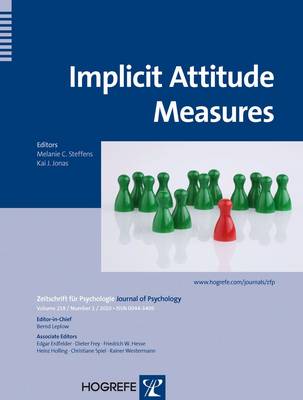Zeitschrift fur Psychologie
1 total work
This field is united by a shared excitement about the discoveries enabled by these measures, be they related to social attitudes and behavior, clinical disorders, consumer decisions, or self-representations, among others. These approaches bridge sub-disciplines of psychology traditionally characterized by little cross-talk. The variety of implicit measures used is already broad and still growing, given variants and implementations of these implicit measures in different samples and research approaches. This compilation brings together contributions that focus either on the comparison of different implicit measures or on the mechanisms underlying individual ones, to provide an overview of virtues and weaknesses of different approaches.
